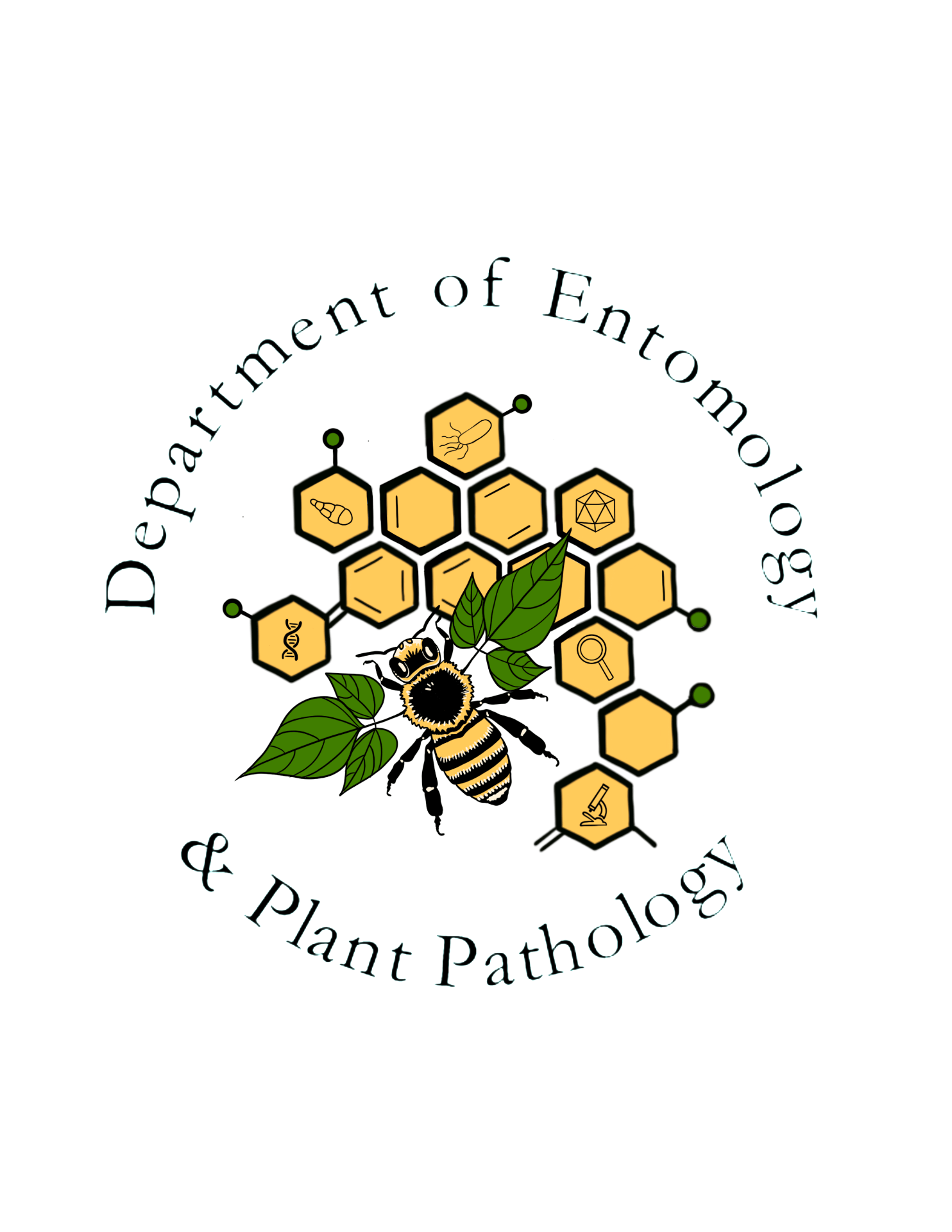History of Arkansas Arthropod Studies
The collections of The University of Arkansas System Division of Agriculture’s Arthropod Museum date back to the beginning of the College of Agriculture. The Arkansas Agricultural Experiment Station was established in 1888. In 1905, Colonel W. G. Vincenheller, Station director, successfully lobbied in Little Rock for financial support. The bill that appropriated funds for buildings and maintenance also established the College of Agriculture. Departments devoted to entomology as well as horticulture, agronomy, animal husbandry, and other agricultural subjects were soon organized. The early faculty was composed, for the most part, of Station staff.
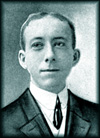 Charles Fredrick Adams was appointed Head of the Department of Entomology in the fall of 1905. He had received his M.D. degree from Kansas City Medical College in 1902 and the A.M. degree from the University of Kansas in 1903, and he had studied under Samuel Wendell Williston, the prominent dipterist who also trained such celebrated entomologists as A. L. Melander and J. M. Aldrich. Adams’ collection, with notable holdings of Tabanidae, was the nucleus around which the collection of the Arthropod Museum was built. He became acting director of the Experiment Station in the fall of 1908, and the following year he was made dean and director of the College of Agriculture (Reynolds and Thomas 1910), though he retained his title as head entomologist. Adams hired aphid taxonomist Paul Hayhurst in 1910.
Charles Fredrick Adams was appointed Head of the Department of Entomology in the fall of 1905. He had received his M.D. degree from Kansas City Medical College in 1902 and the A.M. degree from the University of Kansas in 1903, and he had studied under Samuel Wendell Williston, the prominent dipterist who also trained such celebrated entomologists as A. L. Melander and J. M. Aldrich. Adams’ collection, with notable holdings of Tabanidae, was the nucleus around which the collection of the Arthropod Museum was built. He became acting director of the Experiment Station in the fall of 1908, and the following year he was made dean and director of the College of Agriculture (Reynolds and Thomas 1910), though he retained his title as head entomologist. Adams hired aphid taxonomist Paul Hayhurst in 1910.
David G. Hall joined the Department in 1926. He added to the Diptera collection, largely in the families Syrphidae, Asilidae, Tabanidae, and Sarcophagidae. Hall resigned in 1928, to be succeeded by Dr. H. H. Schwardt, who added substantial amounts of reared tabanid material to the collection. Schwardt remained with the Department for 10 years and was later replaced by Dr. W. R. Horsfall. The collection grew with his work on the mosquitoes of Arkansas (Kumpe 1932).

During the 1950s Dr. Nell Bevel Causey published extensively on Arkansas millipedes. She had earned a Master of Arts degree at the University of Arkansas in 1937 and a doctoral degree at Duke University in 1940. Dr. Causey held faculty positions at the University of Arkansas and later at Louisiana State University. Over a period of more than 30 years she produced some 70 taxonomic and faunistic papers on millipedes. Her specialties were cave millipedes and the family Parajulidae, but she studied nearly every order occurring in North America. Her enormous collection is now housed at the Florida State Collection of Arthropods in Gainesville.
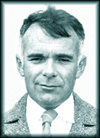 The Entomology Department’s master’s degree program was initiated in 1950, and the doctoral program followed in 1971. Unfortunately, the insect collection had suffered from years of neglect. The hiring of L. H. Rolston in 1952 marked the beginning of the formal organization of the Arthropod Museum. Larry Rolston was a native of West Virginia with a master’s degree from Ohio State University. He interrupted his doctoral studies of join the faculty. He resigned in 1952 to accept a position at the Ohio Agricultural Experiment Station in Wooster, received his Ph.D. from OSU in 1955, rejoined the University of Arkansas faculty in 1957, and resigned in 1966. In addition to curating the collection, he taught insect taxonomy and conducted research in rice pest control.
The Entomology Department’s master’s degree program was initiated in 1950, and the doctoral program followed in 1971. Unfortunately, the insect collection had suffered from years of neglect. The hiring of L. H. Rolston in 1952 marked the beginning of the formal organization of the Arthropod Museum. Larry Rolston was a native of West Virginia with a master’s degree from Ohio State University. He interrupted his doctoral studies of join the faculty. He resigned in 1952 to accept a position at the Ohio Agricultural Experiment Station in Wooster, received his Ph.D. from OSU in 1955, rejoined the University of Arkansas faculty in 1957, and resigned in 1966. In addition to curating the collection, he taught insect taxonomy and conducted research in rice pest control. E. P. “Phil” Rouse became curator of the collection in 1963. Mr. Rouse had a bachelor’s and a master’s degree from the University of Arkansas. He joined the Department as a Research Assistant in 1958. He was at first stationed in the Dewitt-Stuttgart area and worked with Dr. Rolston on insect pests of rice in the field and in storage. He was transferred to Fayetteville in 1963, and from all accounts he performed admirably as curator. We are to this day indebted to him for the many accurate identifications of species in all orders of insects. In addition to identifying thousands of specimens, he authored or co-authored faunal lists of several groups of insects found in Arkansas (Lincoln and Warren 1985). In 1957, interest in the Arkansas ant fauna developed as a result of the imported fire ant problem. Rouse processed thousands of ant specimens from hundreds of collections made around the state and co-authored The Ants of Arkansas with L. O. Warren (Warren and Rouse 1969). He retired in 1979.
E. P. “Phil” Rouse became curator of the collection in 1963. Mr. Rouse had a bachelor’s and a master’s degree from the University of Arkansas. He joined the Department as a Research Assistant in 1958. He was at first stationed in the Dewitt-Stuttgart area and worked with Dr. Rolston on insect pests of rice in the field and in storage. He was transferred to Fayetteville in 1963, and from all accounts he performed admirably as curator. We are to this day indebted to him for the many accurate identifications of species in all orders of insects. In addition to identifying thousands of specimens, he authored or co-authored faunal lists of several groups of insects found in Arkansas (Lincoln and Warren 1985). In 1957, interest in the Arkansas ant fauna developed as a result of the imported fire ant problem. Rouse processed thousands of ant specimens from hundreds of collections made around the state and co-authored The Ants of Arkansas with L. O. Warren (Warren and Rouse 1969). He retired in 1979.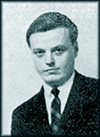
In 1966, the Department hired a bona fide taxonomist. Rodney Kirkton was a hymenopterist. He had received his master’s degree from Purdue University under Leland Chandler in 1963. His doctoral research was a biosystematic analysis of variation of Halictus ligatus (Hymenoptera: Halictidae), and Purdue granted his doctoral degree in 1968. In Arkansas, his responsibilities included the study of hymenopterous parasitoids and a taxonomic study of the bees of Arkansas. In addition to taxonomic work, he experimented with biological control of caterpillars by manipulating paper wasp (Polistes) populations. He died tragically in 1972.
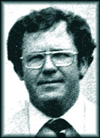 Dr. Robert T. “Tommy” Allen joined the faculty in 1968. He received his Ph.D. in 1969 from the University of Illinois for work on the phylogenetic relationships among species of the carabid genus Loxandrus. In Arkansas, he at first worked on the ecology of ground beetles, but he became more involved in taxonomic pursuits after Kirton’s death. When Phil Rouse retired in 1979, Dr. Allen became Curator of the insect collection. Prior to his stewardship, the collection had been little more than a voucher collection of insects from crop systems. Dr. Allen embarked on an ambitious statewide survey program of forest litter insects. He is credited with integrating the Arthropod Museum’s collection into a functional systematics research and teaching program within the Department. Dr. Allen had a number of graduate students in Arkansas who worked on taxonomic topics and contributed to the Museum. Among them were Robert G. Chenowith (M.S. 1976, Coleoptera: Staphylinidae), John S. Heiss (M.S. 1977, Ph.D. 1982, Araneae), Christopher E. Carlton (M.S. 1980, Ph.D. 1989, Coleoptera: Pselaphidae), Richard Leschen (M.S. 1988, beetle/fungus relationships), David Bowles (Ph.D. 1989, Trichoptera), Cara Rowbotham (M.S. 1989, Ephemeroptera), and Sandy Tedder (Ph.D. 1991, Collembola). Dr. Allen resigned in June 1991 to accept a position as Chairman of the Department of Entomology at the University of Delaware.
Dr. Robert T. “Tommy” Allen joined the faculty in 1968. He received his Ph.D. in 1969 from the University of Illinois for work on the phylogenetic relationships among species of the carabid genus Loxandrus. In Arkansas, he at first worked on the ecology of ground beetles, but he became more involved in taxonomic pursuits after Kirton’s death. When Phil Rouse retired in 1979, Dr. Allen became Curator of the insect collection. Prior to his stewardship, the collection had been little more than a voucher collection of insects from crop systems. Dr. Allen embarked on an ambitious statewide survey program of forest litter insects. He is credited with integrating the Arthropod Museum’s collection into a functional systematics research and teaching program within the Department. Dr. Allen had a number of graduate students in Arkansas who worked on taxonomic topics and contributed to the Museum. Among them were Robert G. Chenowith (M.S. 1976, Coleoptera: Staphylinidae), John S. Heiss (M.S. 1977, Ph.D. 1982, Araneae), Christopher E. Carlton (M.S. 1980, Ph.D. 1989, Coleoptera: Pselaphidae), Richard Leschen (M.S. 1988, beetle/fungus relationships), David Bowles (Ph.D. 1989, Trichoptera), Cara Rowbotham (M.S. 1989, Ephemeroptera), and Sandy Tedder (Ph.D. 1991, Collembola). Dr. Allen resigned in June 1991 to accept a position as Chairman of the Department of Entomology at the University of Delaware.
Dr. Alfred F. Newton, Jr., served as Visiting Systematist for the period October through December 1974. The major purpose of his visit was to build up a working collection of the beetle family Staphylinidae of Arkansas. He curated the entire staphylinid collection, including some 10,000 specimens collected by Dr. Allen and his students, principally Robert Chenowith, and he collected additional material. At the end of his short tenure in Fayetteville, the staphylinid collection contained over 14,000 specimens.
Through the efforts of Tommy Allen, the Arthropod Museum grew considerably in size and scope. It acquired part of the private collection of Carabidae belonging to Dr. S. L. Straneo of Milano, Italy, in 1969. The Straneo Collection added some 18,000 specimens in 5,359 species (Underwood and Brown 1970), representing most of the major tribes of Carabidae form throughout the world. That collection is highly valued because it contains specimens from habitats that no longer exist, and many of the specimens may be the only representatives of their species in North American collections (Carlton, personal communication). The purchase was made possible by a personal gift from Dr. David Rockefeller and matching funds from the Arkansas Agricultural Experiment Station (Allen 1973). Dr. Allen also donated his private collection, and he collected extensively in Arkansas, Louisiana, and Mississippi, as well as in Bolivia and Panama. During his tenure as Curator, the Museum received two valuable collections donated by Mr. Board and Dr. W. D. Wyley, representing 183 species of long-horned beetles that occur in Arkansas (Arkansas Naturalist 1983).
 and associates had studied the spiders of pastures and cotton fields and the spider predators of fall webworm and the bollworm. In 1971, W. B. Peck, L. O. Warren, and I. L. Brown published a study of the spider fauna of shortleaf and loblolly pines in Arkansas. At the same time, Peggy Rae Dorris of Henderson State University, Arkadelphia, had work underway to provide Arkansas with a checklist of spiders. Dr. Dorris completed her doctoral degree in biology at the University of Mississippi in 1967. She joined the faculty of Henderson State University in 1966 and collected spiders in every county of Arkansas before her retirement in 1996. Her extensive collection was donated to the University of Arkansas Arthropod Museum in 2005. She published over 40 spider papers in both state and national journals. Dorris was Chair of the biology department at Henderson State University for 19 years and served as President of the Arkansas Academy of Science from 1995-1996. She also held memberships in many professional associations.
and associates had studied the spiders of pastures and cotton fields and the spider predators of fall webworm and the bollworm. In 1971, W. B. Peck, L. O. Warren, and I. L. Brown published a study of the spider fauna of shortleaf and loblolly pines in Arkansas. At the same time, Peggy Rae Dorris of Henderson State University, Arkadelphia, had work underway to provide Arkansas with a checklist of spiders. Dr. Dorris completed her doctoral degree in biology at the University of Mississippi in 1967. She joined the faculty of Henderson State University in 1966 and collected spiders in every county of Arkansas before her retirement in 1996. Her extensive collection was donated to the University of Arkansas Arthropod Museum in 2005. She published over 40 spider papers in both state and national journals. Dorris was Chair of the biology department at Henderson State University for 19 years and served as President of the Arkansas Academy of Science from 1995-1996. She also held memberships in many professional associations. The University of Arkansas spider collection grew considerably under John Heiss’s influence. For his master’s thesis, he studied the spider fauna of Newton and Union Counties. After receiving his doctoral degree in 1982, he remained at the University of Arkansas, working on spiders associated with rice and cotton, and paying particular attention to the family Gnaphosidae in Arkansas.
The University of Arkansas spider collection grew considerably under John Heiss’s influence. For his master’s thesis, he studied the spider fauna of Newton and Union Counties. After receiving his doctoral degree in 1982, he remained at the University of Arkansas, working on spiders associated with rice and cotton, and paying particular attention to the family Gnaphosidae in Arkansas. 1981, after finishing his master’s work on the pselaphid genus Hexirhexius, and he was hired as Collection Manager in 1982. He finished his doctoral work on the pselaphid beetle genera of eastern North America in 1989 and continued in the employment of the College as Research Associate until Jim Whitfield’s arrival in the fall of 1992. After that he supported himself on grant funds until 1995, when he joined the entomology faculty of Louisiana State University, where he now serves as Director of the Louisiana State Arthropod Museum. Chris named the Arkansas facility the University of Arkansas Arthropod Museum, and he was the driving force behind early attempts to obtain funding from the National Science Foundation for its improvement. He contributed vast amounts of time and effort to the organization and curation of the collection, to building its inventory, and to emphasizing its value as a resource to the applied entomology community.
1981, after finishing his master’s work on the pselaphid genus Hexirhexius, and he was hired as Collection Manager in 1982. He finished his doctoral work on the pselaphid beetle genera of eastern North America in 1989 and continued in the employment of the College as Research Associate until Jim Whitfield’s arrival in the fall of 1992. After that he supported himself on grant funds until 1995, when he joined the entomology faculty of Louisiana State University, where he now serves as Director of the Louisiana State Arthropod Museum. Chris named the Arkansas facility the University of Arkansas Arthropod Museum, and he was the driving force behind early attempts to obtain funding from the National Science Foundation for its improvement. He contributed vast amounts of time and effort to the organization and curation of the collection, to building its inventory, and to emphasizing its value as a resource to the applied entomology community. Dr. James B. Whitfield joined the faculty as systematist and curator in 1992. He had received his doctoral degree in 1985 from the University of California, Berkeley, having completed a dissertation on a systematic revision of the Nearctic species of the genus Pholetesor (Hymenoptera: Braconidae). He later held a joint Adjunct Assistant Professorship at the University of Missouri-St. Louis and Instructorship at Washington University in St. Louis. At the University of Arkansas, he researched the New World genera of the family Braconidae, taught courses in insect taxonomy, immature insects, and principles of systematics, and handled identification and data requests. He and Chris Carlton successfully reapplied to NSF for collection improvement funding in 1994. By that time the Museum’s holdings had grown to some 650,000 specimens, and the collection was growing rapidly. About two-thirds of the pinned specimens were in old, oversized, warped wooden cabinets that allowed easy entry of pests, such as dermestid beetles and book lice, and made it difficult to seal in fumigants. A hodge-podge of miscellaneous cabinets held the alcohol-preserved material. Thus, an active, valuable and rapidly growing reference and research collection was housed in outdated cabinets that offered inadequate protection and preservation and made inefficient use of space. The NSF grant allowed for replacement of the outdated collection storage hardware and provided temporary additional curatorial assistance during the collection’s reorganization into new cabinets. Reorganization created much-needed workspace in the Museum.
Dr. James B. Whitfield joined the faculty as systematist and curator in 1992. He had received his doctoral degree in 1985 from the University of California, Berkeley, having completed a dissertation on a systematic revision of the Nearctic species of the genus Pholetesor (Hymenoptera: Braconidae). He later held a joint Adjunct Assistant Professorship at the University of Missouri-St. Louis and Instructorship at Washington University in St. Louis. At the University of Arkansas, he researched the New World genera of the family Braconidae, taught courses in insect taxonomy, immature insects, and principles of systematics, and handled identification and data requests. He and Chris Carlton successfully reapplied to NSF for collection improvement funding in 1994. By that time the Museum’s holdings had grown to some 650,000 specimens, and the collection was growing rapidly. About two-thirds of the pinned specimens were in old, oversized, warped wooden cabinets that allowed easy entry of pests, such as dermestid beetles and book lice, and made it difficult to seal in fumigants. A hodge-podge of miscellaneous cabinets held the alcohol-preserved material. Thus, an active, valuable and rapidly growing reference and research collection was housed in outdated cabinets that offered inadequate protection and preservation and made inefficient use of space. The NSF grant allowed for replacement of the outdated collection storage hardware and provided temporary additional curatorial assistance during the collection’s reorganization into new cabinets. Reorganization created much-needed workspace in the Museum.
Dr. Whitfield reorganized the Hymenoptera collection and added about 25,000 specimens of Hymenoptera (especially Ichneumonidae), Lepidoptera, and Diptera. He resigned in August 2001 and joined the faculty of the Department of Entomology, University of Illinois at Urbana-Champaign.
Dr. Whitfield and Dr. Donald Steinkraus established the Entomology Department’s annual Insect Festival, which now each year exposes around 3000 school children and other interested individuals to Arthropod Museum displays, as well as living insects, games, and various cultural items with entomological themes. The first festival, held 29 October 1993, featured insect horror and monster films in addition to specimens, and it drew 300 to 400 visitors from the community.
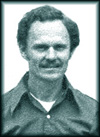 Gerald Wallis served as half-time Collection Manager under Dr. Whitfield until he retired in May 1999. He had received his master’s degree in 1964 from the University of Arkansas for work on the biology of a pitch-eating weevil, and he was hired soon thereafter as a research assistant in forest entomology. He also taught apiculture. As Collection Manager, Gerald performed service identifications, fumigated the collection, processed loans, and gave presentations to growing numbers of school groups. He also incorporated the Paulissen collection and many of Tommy Allen’s carabids with the main collection.
Gerald Wallis served as half-time Collection Manager under Dr. Whitfield until he retired in May 1999. He had received his master’s degree in 1964 from the University of Arkansas for work on the biology of a pitch-eating weevil, and he was hired soon thereafter as a research assistant in forest entomology. He also taught apiculture. As Collection Manager, Gerald performed service identifications, fumigated the collection, processed loans, and gave presentations to growing numbers of school groups. He also incorporated the Paulissen collection and many of Tommy Allen’s carabids with the main collection.At the present time, the Arthropod Museum houses an estimated 750,000 specimens, representing perhaps 25,000 species (Miller 1998). In addition to the collections mentioned above, the Museum has significant holdings of specimens from South Vietnam and Thailand. The history of these collections is not clear.
Jeffrey K. Barnes, Curator
24 March 2003
Allen, R. T. and R. G. Chenowith. 1979. Insect identification and its relation to insect control: the University of Arkansas insect collection. Arkansas Farm Research 28 (6): 3.
Arkansas Naturalist. 1983 (September). Vol 1 (9): 11.
Kumpe, O. 1932. Arkansas’ only Ph.D. granted in entomology. Arkansas Agriculturist 9 (4): 1, 16.
Lincoln, C. and L. O. Warren. 1985. A history of entomology in Arkansas. Special Collections, University of Arkansas Libraries, Fayetteville.
Miller, F. 1998. Small world… Arthropod Museum puts bugs in perspective. Arkansas Land and Life 4 (1): 14-15.
Reynolds, J. H. and D. Y. Thomas. 1910. History of the University of Arkansas. University of Arkansas, Fayetteville. 555 pages.
Rouse, P. and L. O. Warren. 1964. The entomological museum. Arkansas Farm Research 13: 10.
Rouse, E. P. 1967. The problem of insect identification and the University of Arkansas reference collection. Proceedings of the Arkansas Academy of Science 21: 45-48.
Underwood, A. and R. Brown. 1970. The entomology museum. Arkansas Agriculturist 50 (1): 7.
Warren, L. O. and E. P. Rouse. 1969. The ants of Arkansas. University of Arkansas (Fayetteville) Agricultural Experiment Station Bulletin 742. 67 pages.
Wilkinson, T. 1951. Department in the College of Agriculture – III. Entomology. Arkansas Agriculturist 28 (5): 9, 17.
